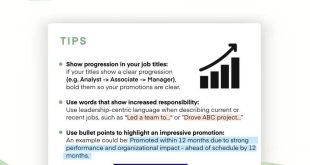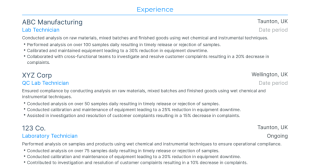Concept Of Strategic Human Resource Management – GE’s website states: “The relentless pursuit of progress has fueled 130 years of innovation. We believe our people are our most powerful catalyst for growth and innovation.” Google’s HR team revolutionized HR like Google revolutionized search engines. HR is seen as a business partner and all HR functions are integrated into general business strategies. The philosophy of the Walt Disney Company is that you can design and build the greatest attractions in the world, but it takes people to make dreams come true. Toyota is seen as a model of operational excellence. Behind Toyota’s secrets lies the power of its highly qualified people. All these examples show how human power can transform a company into a world-class company.
The concept of strategic human resource management (SHRM) is fundamentally based on this principle of human power. SHRM is mainly concerned with the integration of HRM into the strategic management process. Today, personnel is considered a potential influencer in the creation and implementation of the organization’s goals. Interestingly, HR departments are now seen as a powerful force for strategic achievement.
Concept Of Strategic Human Resource Management
Despite the importance of SHRM, there is still a dearth of books in this field. Institutes that offer management courses usually have a course in strategic personnel management. However, most books focus on traditional HRM or the few existing new texts are largely prescriptive in nature and do not focus on comprehensive explanations of concepts and processes. This makes it very difficult for teachers and students to access relevant and contextual material. The current book fills a big gap in the market.
Hrm Functions: Top 12 Functions Of An Hrm In 2023
The book is mainly intended for management students, teachers and also practitioners. It can be used at various levels such as undergraduate, graduate, management and PG degree programs in management. It is of particular interest to HR students.
Each chapter of the book begins with a brief overview for clarity. The learning objectives for each chapter are written. The original story creates the background. The content of each chapter is clearly and logically organized and supported by appropriate handouts and tables. Each chapter ends with a summary and discussion questions. The chapters are followed by cases designed to relate the topic to real problems and situations. Each chapter has a news field called “getting the news” to connect theoretical aspects with actual events.
Each chapter includes an anecdote from a story, fairy tale, or historical document to illustrate the broader meaning of an idea. This gives substance to the chapter and makes it interesting for the reader. Short anecdotal examples are Alice in Wonderland, Jonathan Livingstone The Seagull, Shakespeare’s works, Moses’ management philosophy. The book is based on evidence-based concepts, not just theory. It uses examples, cases, images, research, and empirical data to introduce readers to current business issues.
The book introduces dozens of new topics that are not covered in typical HRM books. Some of these concepts are hyperarchy and vecro-organizations; redundancy and strategic work modeling; Bodyshopping, temping, boomerang rental and Moonlighting as rental options; issues relating to the reliability and validity of selection, examination, withdrawal and re-examination; career plateaus; variable pay and ESOP; social media and HR; HR analysis; HRM measurement methods etc.
Strategic Human Resources Planning: Belcourt, Monica, Mcbey, Ken: 9780176570309: Books
This book includes a discussion of strategic HR concepts of global importance. There are many examples from a global perspective. Thus, the book is relevant to any country or region. In particular, as the book mainly focuses on emerging markets such as India, it may be of particular interest to readers in Asian countries. The book attempts to provide a detailed but simplified picture of the concepts and practices. It serves two important purposes: to serve as a learned source of high academic rigor while providing up-to-date information in a simple and readable manner.
Feza Tabassum Azmi teaches in the Department of Business Administration, Faculty of Management Studies and Research, Aligarh Muslim University, India. Human resource management (HRM) used to be called human resources department. Previously, the HR department was responsible for hiring people and handling recruitment documents and processes. The first personnel department is believed to have been established in 1901 by the National Cash Company (NCR). The company faced a widespread strike, but won the union after the lockout. (We turn to unions in Chapter 12, “Working with Unions.”) After this uphill battle, the company president decided to improve employee relations by creating a human resources department to handle grievances, layoffs, safety concerns, and other employee concerns. The department also monitored new legislation regarding laws affecting the organization. Many other companies have realized that a department is needed to create employee satisfaction, which leads to higher productivity. In 1913, Henry Ford saw employee turnover at 380 percent and tried to ease the turnover by raising wages from $2.50 to $5.00, even though $2.50 was fair for the time (Losey, 2011). Of course, this approach didn’t work for long, and these large companies are beginning to realize that they need to do more than hire and fire to meet customer demand.
Recently, however, the field of personnel management has been divided into personnel management and personnel development, as these functions have evolved over the centuries. HRM is not only critical to the success of the organization, but should be part of the company’s overall strategic plan, because many companies today depend on people to win. Strategic planning plays an important role in organizational performance.
Most people agree that the following tasks generally fall under the purview of HRM. Each of these aspects has its own role in the organization’s overall strategic plan:
Shrm, Strategic Human Resource Management Symbol. Words Shrm Strategic Human Resource Management Symbol On Blocks On A Beautiful Stock Image
In small organizations, the manager or owner may perform HRM functions (de Kock and Uhlaner, 2001). They hire people, train them and decide how much they are paid. Larger companies ultimately perform the same tasks, but because they have more employees, they can hire specialists or HR managers to handle these business areas. As a result, you are likely to perform HRM duties as a manager or entrepreneur, so it is important to understand the strategic components of HRM.
The personnel strategy is a thorough and systematic action plan developed by the personnel department. According to this definition, HR strategy includes HR strategic plans and detailed ways to implement HR plans. Think of the HRM strategic plan as the major goals that the organization wants to achieve, and the HR plan as the concrete actions that will be taken to achieve the strategic plan. In other words, a strategic plan may include long-term goals, while an HR plan may include short-term goals related to the overall strategy. As mentioned at the beginning of this chapter, HR departments used to be called HR departments. This term means that a department “supports” another organization. Companies now realize that the human side of business is the most important asset in any business (especially in this global economy), so HR is even more important than it was twenty years ago. While human resource management mainly includes functions related to the hiring process and legal compliance, human resources encompasses much more, including strategic planning, which is the focus of this chapter. The Ulrich HR model, a common way of looking at the strategic planning of HRM, provides an overview of the role of HRM in an organization. His model is said to have started a movement that changed the way HR was viewed; HR is no longer just a functional area, but has become a partnership in the organization. Although his model has changed over the years, the current model considers integrating HR with the overall global business strategy to create a strategic partnership (Ulrich & Brockbank, 2005). Its recently revamped model covers five key HR areas:
According to Ulrich (Ulrich, 2011), the implementation of this model should be carried out by understanding the company’s general goals, problems, challenges and opportunities. For example, an HR professional must understand the dynamic nature of the HRM environment, such as changes in the labor market, corporate culture and values, customers, shareholders and the economy. When this happens, HR can determine how best to meet the organization’s needs in these five key areas.
HR managers know the business and therefore know the needs of the company and can plan to meet these needs. They are also up-to-date on current events and therefore know what is happening globally that may affect their strategic plan. For example, if they know that an economic recession is imminent, they will adjust their strategic plan. In other words, a strategic plan should be a living document that changes as the business and the world change
What Is Strategic Human Resource Management ?
Pdf strategic human resource management, benefits of strategic human resource management, strategic human resource management topics, examples of strategic human resource management, mello strategic human resource management, strategic human resource management practices, human resource management strategic planning, define strategic human resource management, concept of human resource management, process of strategic human resource management, strategic human resource management certification, strategic international human resource management



